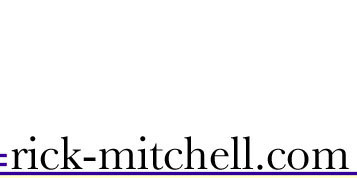New French Regulations Close Out Long EU Struggle Over Chocolate
By Rick Mitchell
[Paris] On August 1 the French government published regulations putting it in line with the latest European Union directive on chocolate, thus closing out 30 years of political wrangling over one of the most contentious issues in EU history.
The June 2000 directive states that chocolate may contain up to 5% vegetable fats other than cocoa butter, and still be called “chocolate.” Previously France, and a handful of its neighbors, had allowed only cocoa butter in chocolate.
The Club des Croqueurs de Chocolat, which rates France’s chocolate artisans and shops, unofficially speaks for France’s chocolate purists. The group, whose name roughly translates to “the chocolate munchers’ club,” said that it had “always been, remains and always will be opposed to the idea that we can call ‘chocolate’ a product containing any other fat than that in the cocoa bean.”
France wasn’t alone in resisting vegetable fats in their chocolates, just the last to transpose the directive into national law before the August 3 deadline. Perhaps hoping to assuage purists, the directive tightens labeling rules: chocolate must bear detailed information on ingredients, including the minimum percentage of cocoa contained, and, if appropriate, the conspicuous, legible statement, “contains vegetable fat in addition to cocoa butter.”
Only six such fats are allowed: illepe, palm oil, sal, shea, kokum gurgi, and mango kernels. Manufacturers can use coconut oil as an alternative for ice cream and similar frozen products.
The new rules maintain previous standards for such things as milk content in milk chocolate, and defining “filled chocolates.” Honey, dried fruit and nuts and cereal can account for up to 40% of the finished product’s weight. Chocolate may contain soya lecithin as an emulsifier and must bear a “best used before” date. Animal fat, flour and starch remain prohibited.
Europe’s political chocolate impasse dates to 1973, when the UK, Ireland and Denmark joined the then-European Economic Community and promptly demanded to be allowed to continue their century-old practice of using vegetable fats in chocolate. The original ECC members, France, Belgium, Italy, Luxembourg, Belgium, and the Netherlands -- protesting that they’d been making cocoa-centric chocolate for at least that long, probably longer -- rejected the request.
One of the EC’s most binding principles was, and still is, fair competition and the free-flow of goods and trade. So the Community had no choice but to try to find a compromise. However, the 1973 directive on chocolate failed to resolve the disagreement. The newcomers could make and sell their chocolate products at home, calling them whatever they liked, but elsewhere in Europe they couldn’t call it “chocolate.”
“An early suggestion from other EU member states was to call our chocolate "vegelate," which was totally unacceptable, said Mark Woolfe, on the website for the UK’s Food and Standards Agency.
The EC gave the European Commission three years to find a solution. It ended up taking 27 years of political fighting, false starts and nationalistic blustering in the press. Industrial chocolate makers, such as Nestlé and Kraft Foods, lobbied in favor of vegetable fats, which are up to ten times cheaper than cocoa butter.
Opponents pointed out that African and South American cocoa producers would be hurt by a sudden decline in demand if vegetable fats were admitted. Time passed; the EC admitted new members. When it became the European Union in 1994, it had 15. The six founders could now be outvoted on chocolate, and finally were.
Woolfe said he was pleased with the directive. “The UK argued strongly the case for our traditional recipe, keen that consumers and producers be able to keep eating and making the chocolate they prefer,” he said.
The Conquistadors brought chocolate to Europe from the court of the Aztec ruler Montezuma in 1519. Cocoa beans grow on the theobrama cacao tree, whose first name means “food of the gods” in Greek. This is probably not lost on the 30% of respondents to a recent French survey who said they had a “passionate” attachment to chocolate.
Belgium is the top EU consumer of chocolate with about 10kg per capita per year. The UK is next with about 8.5kg, with the French third at 6.8kg. But unlike the British, who prefer milk chocolate, 58% of French prefer the more expensive, refined dark chocolate, which requires far more cocoa, with content at least 50%. Over 17 million French citizens consume chocolate every day.
On its web site, the chocolate munchers’ club counsels the faithful to henceforth read labels with extreme care, and to choose only chocolate that can claim to be “chocolat pur beurre de cacao,” or pure cocoa butter chocolate.
The EU directive says it plans to study how the directive affects cocoa producer countries. Meanwhile, a spokesperson for Kraft told the French daily Le Monde that the company would not immediately introduce vegetable fats into its products. “It’s a little like GMOs. The reaction of the French public is such that we are not going to use them for now.”

